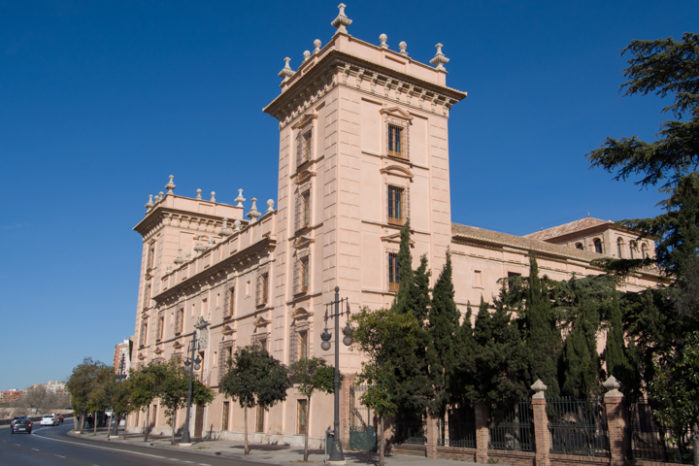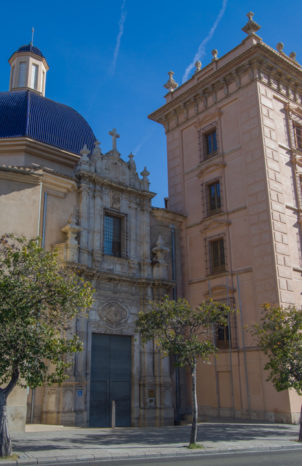Museum of Fine Arts of Valencia
The Museum of Fine Arts of Valencia is the most important museum reference in the Valencian Community. From its opening in 1839 to the present day, almost two centuries have passed, in which it has witnessed numerous vicissitudes linked to the historical evolution of the city of Valencia. Fundamentally, its artistic collections consist of a Great art gallery, with works by Jacomart, Joan Reixach, Paolo de San Leocadio, Joan de Joanes, Francisco Ribalta, Jerónimo Jacinto de Espinosa, José de Ribera, Diego Velázquez, Bartolomé Esteban Murillo, Francisco de Goya, Vicente López, Ignacio Pinazo, Joaquín Sorolla, Antonio Muñoz Degrain and Cecilio Pla. It also has an extensive collection of drawings and engravings, as well as sculptures, archaeological pieces, architectural fragments, photographs and decorative arts.
The origin of the Museum is related to the Royal Academy of Fine Arts of San Carlos, whose statutes were approved by King Carlos III in 1768. Within this corporation a small nucleus of works was gathered with the donations of teachers and students, the whole of which would become the first important contribution of the future museum. In 1812, with the French occupation of Valencia, Marshal Luis Gabriel Suchet, wanting to attract the most influential corporations of the city to the Napoleonic cause, expressed his desire to form a museum with paintings, sculptures, medals and books requisitioned from the convents of regulars. Once peace was restored and the national government was restored in 1813, the works of art were returned to their respective places of origin. The definitive impetus for the creation of the Museum was given by the confiscation measures of 1835 and 1837, which led to the formation of provincial museums of Fine Arts with the works of art confiscated from the suppressed convents. The works went first to the Tremp building and then to the Carme Calzado convent to accommodate the new museum, which finally opened its doors to the public on October 5, 1839. In 1936, with the Civil War, the Museum was dismantled and used as a warehouse for the Artistic Treasure, moving part of its funds to Madrid. At the end of the war, and as a result of the ruinous state of the building, it was decided to move the Museum to the Seminary College of San Pio V, current headquarters of the Museum of Fine Arts of Valencia.
Architecture
The College of San Pio V , now the Museum of Fine Arts and headquarters of the Royal Academy of San Carlos, was founded by Archbishop Juan Tomás de Rocabertí to train priests. Designed by Juan Pérez Castiel in 1683, its execution was delayed until well into the eighteenth century. It is composed of two parts: the school and the temple. The first has a quadrangular floor plan arranged around a cloister, and its two towers on the façade over the Turia give it the appearance of a fortress, as was common then in monasteries and in certain palaces in the city. This façade features the padding of the corners in the form of diamond tips, the alternating straight and curved pediments that crown the windows, the cornices and the finishes of pitchers and balloons.
Palace of St. Pius V
The temple is attached to this rectangle with its octagonal floor plan and its large blue glazed dome, rebuilt after being demolished in 1925. It is also worth mentioning its façade, the work of José Mínguez with two floors, pilasters in highlight and a curvilinear pediment that finishes it, all this is located in the transition from Baroque to Neoclassicism.
Between 1820 and 1826 it was the headquarters of the Charity, and in 1835 it became dependent on the State, which dedicated it to storing army supplies and, during the Civil War, to a military hospital.
Its collections include one of the most important sets of Gothic paintings in the country, and works by Joan de Joanes, Ribera, Velázquez, Goya, Pinazo or Sorolla among other distinguished artists.


Dades bàsiques
Tuesday to Sunday: 10 a.m. to 8 p.m.
Monday: closed
Closed: 1st January and 25th December
Free admission
San Pio V Street, 9
46010 Valencia
Telephone: 963 870 300
E-mail: museobellasartesvalencia@gva.es
Bus: 1, 5B, 6, 7, 8, 9, 11, 16, 26, 28, 29, 36, 95 and N3
Metro: Pont de Fusta (Line 4)